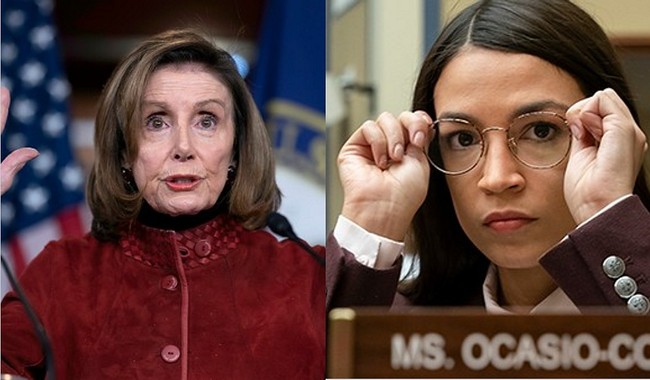Summary
Nancy Pelosi may step down from Congress after 2026 amid challenges from far-left candidates.
Source: redstate.com

AI News Q&A (Free Content)
Q1: Who is Nancy Pelosi and what are her political achievements?
A1: Nancy Pelosi is an American politician who served as the 52nd speaker of the United States House of Representatives, making history as the first woman to hold the office. Representing California's 11th congressional district since 1987, Pelosi has been a significant figure in the Democratic Party, leading the House Democrats from 2003 to 2023. Her tenure saw major legislative accomplishments, such as the Affordable Care Act and the Dodd-Frank Act. She also played a key role in the impeachment proceedings against President Donald Trump.
Q2: What challenges is Nancy Pelosi facing if she decides to run again in 2026?
A2: Nancy Pelosi is facing potential primary challengers such as state Senator Scott Wiener and former tech executive Saikat Chakrabarti. These challengers represent a push from the far-left within the Democratic Party, indicating a shift in political dynamics and increasing pressure for change within her own party.
Q3: What is the significance of Saikat Chakrabarti's campaign against Pelosi?
A3: Saikat Chakrabarti, known for his progressive stance and previous role as chief of staff for Rep. Alexandria Ocasio-Cortez, is challenging Pelosi with a campaign focused on 'transformational change.' While considered a long shot, his campaign points to a growing sentiment among voters for new leadership and more progressive policies.
Q4: Is there any scientific literature discussing the impact of political leadership changes on policy innovation?
A4: Recent scholarly articles have explored how changes in political leadership can influence policy innovation, particularly in the realms of social and economic reform. These studies highlight the role of leadership in driving transformative agendas and the potential for shifts in policy focus following leadership transitions.
Q5: What role has Nancy Pelosi played in shaping Democratic policies in recent years?
A5: Nancy Pelosi has been instrumental in shaping Democratic policies, particularly during her tenure as Speaker of the House. She has supported major legislative efforts including healthcare reform, economic recovery acts, and infrastructure investment. Her leadership has often been characterized by strategic negotiation and coalition-building within the party.
Q6: How is Nancy Pelosi perceived within the Democratic Party and by the public?
A6: Nancy Pelosi is a polarizing figure, receiving criticism and praise from both conservatives and progressives. Within the Democratic Party, she is respected for her leadership and legislative accomplishments, but also faces scrutiny and challenges from more progressive factions seeking change. Public perception is mixed, reflecting broader political divides.
Q7: What potential impacts could Pelosi's retirement have on the political landscape?
A7: Pelosi's retirement could lead to significant shifts in the Democratic Party's leadership dynamics, opening the door for new, potentially more progressive candidates. This transition could influence the party's policy priorities and strategies, impacting future elections and legislative agendas.





